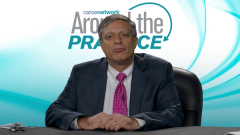
Unmet Needs and Future Directions in Care in Multiple Myeloma
Closing out their discussion on the management of multiple myeloma, expert panelists highlight unmet needs and look toward future directions in care.
Episodes in this series

Transcript:
Sandy Wong, MD: My thinking in choosing between a BCMA T-cell engager and a BCMA CAR [chimeric antigen receptor] is infection. That’s why I’d much prefer a BCMA CAR. We did a retrospective study looking at our experience, from the infusion date of a CAR until a year post-CAR, to see the rate of infection and when infections arise. They arise within the first 90 days, which coincides with the expansion of the CAR and the decline of the CAR T cells in the serum. That’s a different infection profile than ticilimumab, where you’re constantly giving. That’s also something to consider and another reason why I’d sway someone toward CAR T if they can wait for it.
Sagar Lonial, MD: Regarding the duration-of-therapy question with a bispecific, 1 trial presented at ASH [American Society of Hematology Annual Meeting] tried to address that. I applaud them for it. I don’t know if it’s the right answer, but cevostamab did limited-duration therapy and then stopped. Many patients are continuing in remission. We’ve all got folks on the studies for whom toxicity came off and continued to do well. That’s an important concept that we need to better explore.
Sandy Wong, MD: When I looked at that, I thought to myself that we in the myeloma community and the pharmaceutical industry need to step back [and think about] the way we find the right dose and schedules for these T-cell engagers. Maybe we should think about it differently from [how we think about] traditional drugs. Yes, we’ve all had patients for whom you hold the drug because they have a cold and they’re on antibiotics for sinusitis, for example. Then you see them respond for quite a bit of time. It calls into question with teclistamab. Every drug is different in terms of PK [pharmacokinetics] and PD [pharmacodynamics]. A lot of drug dosing and dose findings are based on pharmacokinetics. What about pharmacodynamics? That explores what the T cells are doing and how active they are. [We should] think about incorporating that information into the frequency and the dose of these drugs.
Sagar Lonial, MD: Now you’re wearing your FDA hat.
Sandy Wong, MD: That’s right.
Sagar Lonial, MD: This has been an absolutely wonderful discussion. Thank you for such a lively and robust evaluation of the data. Before we wrap up, I want your thoughts in terms of unmet needs, future directions, where you see things going, and what you want to see in the coming years. We’ll start with Sam.
Samuel M. Rubinstein, MD: It’s an exciting time to be taking care of patients with multiple myeloma. We have a lot of highly effective therapies that have novel targets. Caitlin brought up my take-home point: the biggest unmet need that we have is figuring out how to stop these therapies while preserving disease control.
Caitlin Costello, MD: You stole mine.
Samuel M. Rubinstein, MD: We stole each other’s.
Caitlin Costello, MD: I’ll go to the next obvious 1: with high-risk and functional high-risk [patients], we don’t know what to do with these patients. So much effort needs to be put forth for them.
Sandy Wong, MD: For me it’s those who already got BCMA-directed therapy and don’t have further options. In the coming year, I’ll be excited to see what comes of the teclistamab submission. We need another target to go after.
Timothy Schmidt, MD: For me it’s the ultra-high-risk population, where we’re seeing early progression even with very active great combinatorial therapies. [We need to] figure out who these patients are and identify them for early enrollment in clinical trials aimed at overcoming the adverse effects of this high-risk biology early in their disease course. That’s the unmet need we need to figure this out.
Sagar Lonial, MD: Great. Thank you very much. To our viewing audience, thank you for joining us. We hope you found this Cancer Network® Around the Practice® discussion to be useful and valuable in the treatment of patients with multiple myeloma. Thank you.
Transcript edited for clarity.
Newsletter
Stay up to date on recent advances in the multidisciplinary approach to cancer.



















































































